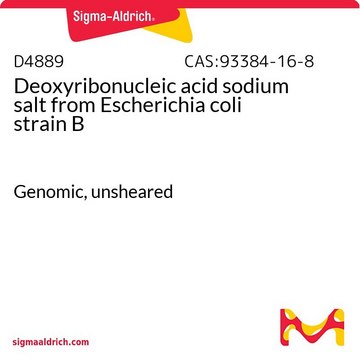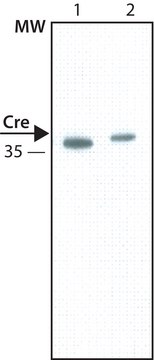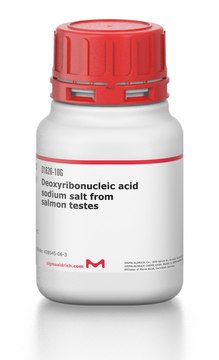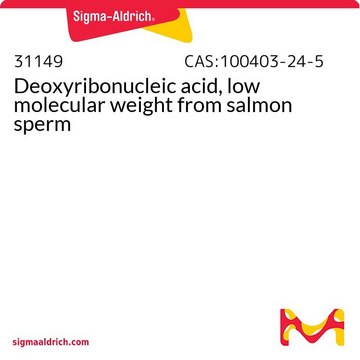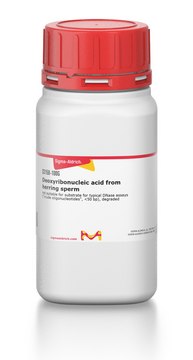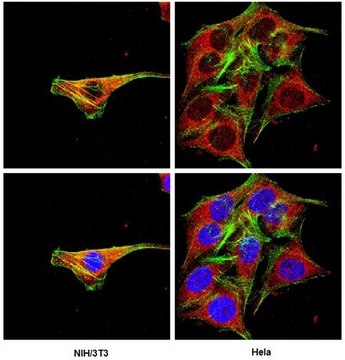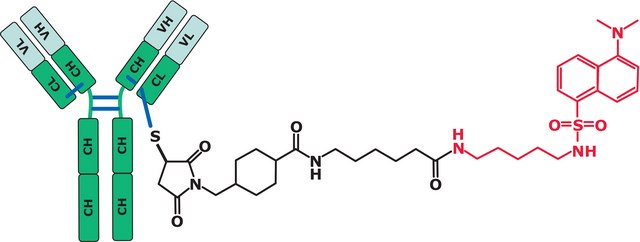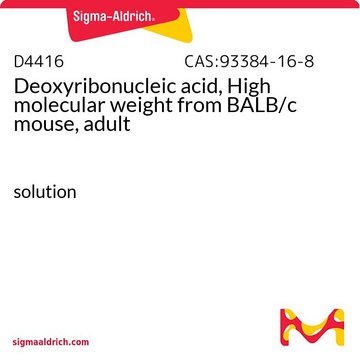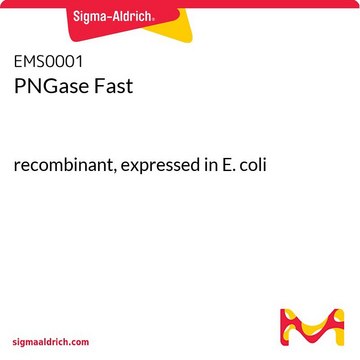D2001
Deoxyribonucleic acid sodium salt from Escherichia coli strain B
Type VIII
Synonym(s):
DNA
Sign Into View Organizational & Contract Pricing
All Photos(2)
About This Item
CAS Number:
EC Number:
MDL number:
UNSPSC Code:
41106305
eCl@ss:
32160414
NACRES:
NA.51
Recommended Products
Looking for similar products? Visit Product Comparison Guide
Application
Escherichia coli DNA has many uses in research. Escherichia coli DNA (ecDNA) is used in studies of DNA binding agents that modulate DNA structure and function. E. coli DNA is used in physicochemical studies of DNA behavior in solution, and to evaluate species-specific DNA structures and binding domains. This DNA is particularly useful for genomic analysis, including PCR, library construction in bacteriophage lambda, and in heterologous pre-hybridization and hybridization protocols.
Deoxyribonucleic acid sodium salt from Escherichia coli strain B has been used to measure the melting temperature (Tm) and in differential scanning calorimetry (DSC) studies. It has also been used as a template sequence in the polymerase chain reaction (PCR).
Preparation Note
Prepared by procedure of Marmur, J., J. Mol. Biol., 3, 208 (1961).
Storage Class Code
11 - Combustible Solids
WGK
WGK 3
Flash Point(F)
Not applicable
Flash Point(C)
Not applicable
Personal Protective Equipment
dust mask type N95 (US), Eyeshields, Gloves
Regulatory Information
常规特殊物品
Choose from one of the most recent versions:
Certificates of Analysis (COA)
Lot/Batch Number
Don't see the Right Version?
If you require a particular version, you can look up a specific certificate by the Lot or Batch number.
Already Own This Product?
Find documentation for the products that you have recently purchased in the Document Library.
R Richins et al.
Biotechnology progress, 17(2), 252-257 (2001-04-21)
The Escherichia coli DNA binding protein FIS is a transcriptional modulator involved in the regulation of many cellular processes, including the activation of rRNA synthesis. High-level overproduction of FIS in early, mid, or late log cultures resulted in growth-phase- and
Mitsumasa Hashimoto et al.
The Journal of biological chemistry, 278(31), 28501-28507 (2003-05-16)
Closely opposed lesions form a unique class of DNA damage that is generated by ionizing radiation. Improper repair of closely opposed lesions could lead to the formation of double strand breaks that can result in increased lethality and mutagenesis. In
Differential scanning calorimetry of bacteria
Miles CA, et al.
Microbiology, 132(4), 939-952 (1986)
Alasdair I MacDonald et al.
Plasmid, 59(2), 119-126 (2008-01-30)
In the lysogenic state, bacteriophage P1 is maintained as a low copy-number circular plasmid. Site-specific recombination at loxP by the phage-encoded Cre protein keeps P1 monomeric, thus helping to ensure stable plasmid inheritance. Two Escherichia coli DNA-binding proteins, PepA and
Solid-state magic-angle spinning NMR of outer-membrane protein G from Escherichia coli
Hiller M, et al.
Chembiochem, 6(9), 1679-1684 (2005)
Our team of scientists has experience in all areas of research including Life Science, Material Science, Chemical Synthesis, Chromatography, Analytical and many others.
Contact Technical Service